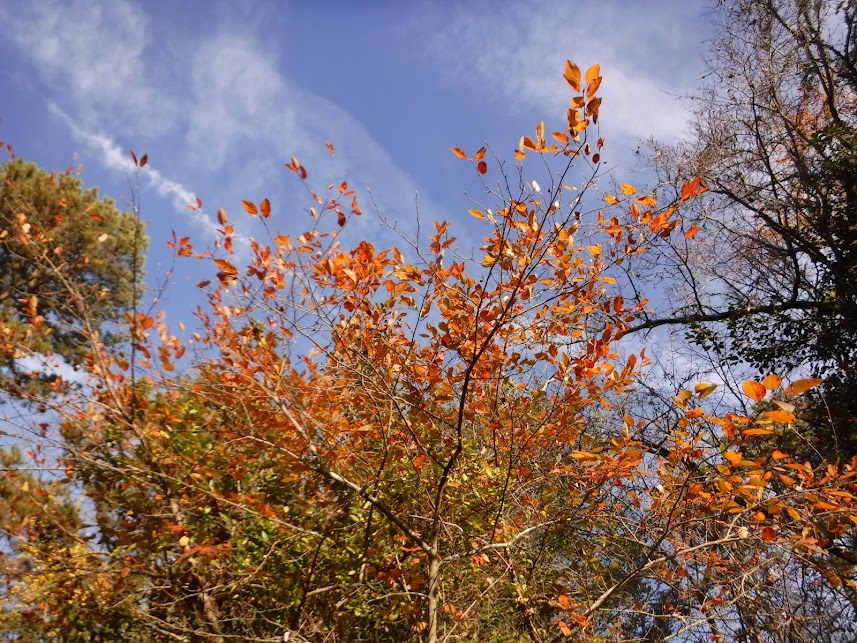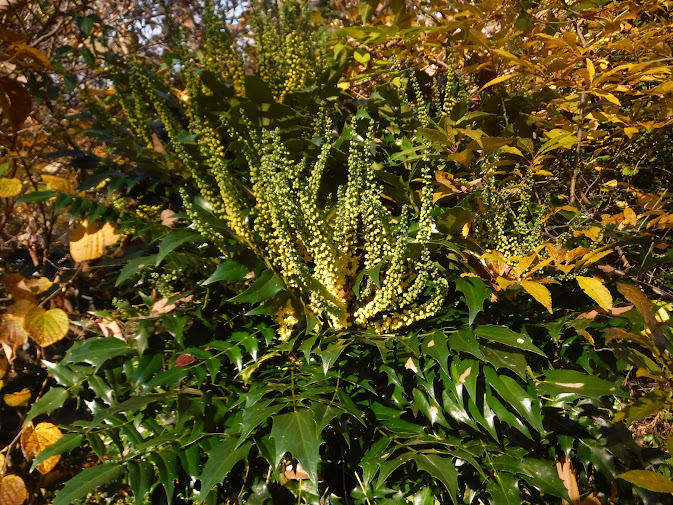Bogturtle's Garden- November 2023
Snip taken of a stopped video. First time I ever saw what I think is one momma Raccoon with four kits.
The photo is from some other Fall.
Usually the American Witch Hazel blooms with the little spidery flowers obscured by the Fall leaves. This clone has lost its leaves, so the flowers are much easier to see. Hamamelis virginica 'August Moon'.
Just the turn out from where we park the vehicles. With the Oakleaf Hydrangea, the Wintersweet above it, and on to the orange Shadbush or Amelanchier and, on the other side of the drive, the Silverbell or Halesia triptera, with its orange leaves. In this photo, leaves are still strewn on the stones, but it made my simple minded day that I was able to blow them all away. Of course they'll be back, but still.....
Below is a photo of the Shadblow, Shadbush, Juneberry, Amelanchier against the sky. And those clouds signal it may rain, so getting the leaves off the drive was advantageous.
The foliage of that same Japanese Cornell catching the morning Sun.
I think this is Cotoneaster 'Tom Thumb' and that, too, has colored nicely for the Fall. A dwarf that would make a fine shrub to tie down a house to the landscape, as people do.
Blueberry bushes are common here. Most color beautifully, in Fall and some have red stems. That makes the fields of the local Blueberry farms amazing in Winter. The berries vary in size and one woman and one man figured out how to improve Blueberries for the World. Elizabeth White of Whitesbog, NJ sent locals into the woods with boards with holes and they would help discover individual bushes that gave larger berries. Dr. Coville ran the show with her. So now we have vastly improved sorts.
With enough Sun, this shrub rivals the vastly more common Euonymus alata, the 'Burning Bush'. It is Enkianthus perulatus, with any common name unknown to me.
Ridiculous to think an insect pollinated plant would wait until this time of year to start to bloom. Small flies can be seen if it is a warm Winter day, but still it seems to make little sense. This is Mahonia 'Charity'. In the clutter of shrubs in front of the screen that hides the potting bench from our view of the yard.
Just another of the dozens of native shrubs that people may not know about, but would make a splendid hedge or house foundation choice. The flowers do have a pleasant, but not traveling, odor and repulse some, looking like 4 inch long worms. Doesn't bother me.
And, in thinking about that, use of plants to tie a house to the ground is not a custom in some sections of the Country. It is typical of S. Jersey, but not of Maine.
This is the more dwarf form of Itea virginica called 'Little Henry'. Usually turns this color before shedding the leaves. In a corner of the back yard the other larger form is just crowded into the border. That is called I. v. 'Henry's Garnet'.



















What have you seen? You probably can email me, as I think you may have my address. I like that I can see some people that should not be on the property or delivery vehicles.
ReplyDeleteI did gather that, but surely the camera must show some other wildlife.
ReplyDeleteWe've seen deer occasionally & a fox but nothing on a regular basis.
ReplyDelete